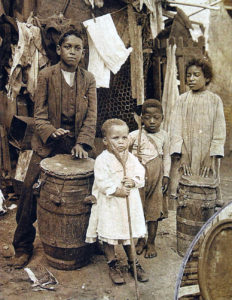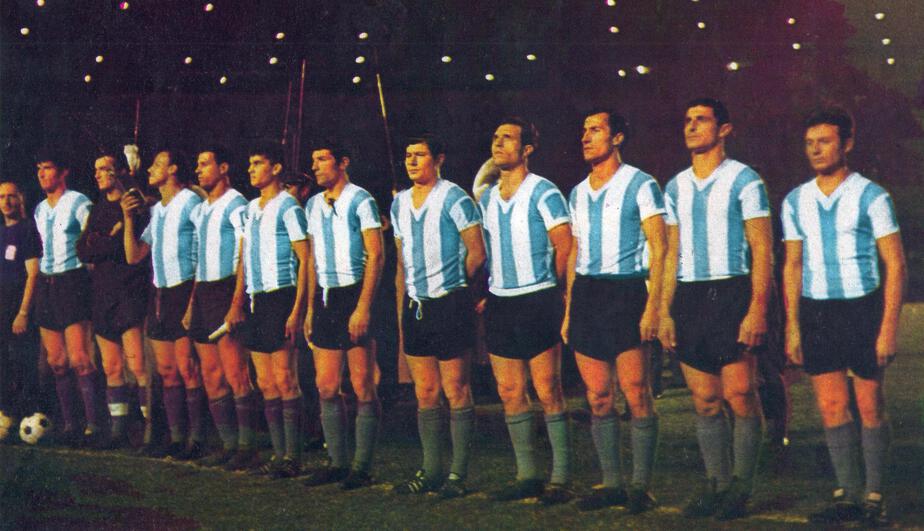Written by Kartik Sundar
If you were to walk down the streets of Buenos Aires, you would be forgiven for thinking you were somewhere in Spain. Culturally, architecturally, and ethnically European – Buenos Aires, and Argentina by extension, has been quite literally whitewashed. Presently, Afro-Argentines constitute less than 0.5% of Argentina’s total population. Neighbours Brazil, on the other hand, has more than half their population hailing from African descent. What made the difference?

Eurocentrism and ‘White Mestizaje’
The minuscule black population in Argentina is no accident; it was a calculated and systemic effort to create a white Argentinian society, based on the Europeans. Before looking at the actual events that reduced the Afro-Argentine population, it is important to understand the prevailing ideologies at the time which allowed this racial discrimination to happen.
In the early stages of Argentina’s existence, one of the dominant ideologies was a kind of Eurocentrism. Proponents of this saw that emulating Europe in every way possible was the best course of action to overcome socio-economic problems plaguing the country. Some of Argentina’s founding statesmen such as Mariano Moreno and Bernardino Rivadavia espoused these sentiments. Argentina’s seventh president, Domingo Faustino Sarmiento was a staunch believer in European superiority, up to the point where historians have claimed he may have had a direct role in the removal of Afro-Argentines from Argentinian society. Alejandro Frigerio, an anthropologist at the Universidad Catolica de Buenos Aires, noted, “People of mixed ancestry are often not considered ‘black’ in Argentina, historically, because having black ancestry was not considered proper.”
The emergence of the “White Mestizaje” — white mixed race — ideology affected the way Argentinian society treated race relations. Two distinct discourses developed around this ideology. The first characterised a certain racial subject as “the citizen”, implying that the nation was built on around individuals of this race and background. The racial subject in question was called ‘mestizo’ and generally referred to individuals who were descendants of Caucasians and native Americans. The second discourse around the Mestizaje ideology explicitly excluded black and indigenous people from being “the citizen”. In both cases, Afro-Argentinians were not considered as “real” Argentinian citizens.

However, this antagonism towards the black population was not unified throughout the state. In the early 1900s, liberal members of the Argentinian intellectual and artistic crowd began to critique the notion of European superiority. An Uruguayan essayist by the name of Jose Enrique Rodo highlighted the important “Hispanic” characteristic at the core of Latin American societies. Following on this, prominent intellectuals across Latin America drew upon Rodo’s work in an attempt to break down racial hierarchies. Jose Vasconcelos, a Mexican intellectual, preached that Latin America could only benefit from being a multicultural and ethnically diverse area.
Despite these efforts, the European immigrant remained celebrated and idealized in Argentina. Both, the press as well as the government, were adamant that the urbanization and economic growth of Argentina as a whole could be attributed to the boom in European immigration to the region. By and large, the consensus that emerged in the national press was that Argentina was a white country, newly mixed, made up of constituent European elements.
__________________________
Did You Know?
Even the Argentine constitution encourages European immigration. Section 25, Chapter 1 says, “The Federal Government will encourage European immigration; and will not restrict, limit, nor tax the entry of any foreigner into the territory of Argentina who comes with the goal of working the land, bettering industry, or introducing or teaching sciences or the arts”
__________________________
Even the sports press in the region argued Argentina’s superiority in the South American region through emphasizing the European-ness of its own team. Within the Argentinian footballing world, Uruguayans were viewed as more “Argentinian” than those residing in non-Pampas Argentina. The Pampas region in Argentina was the wealthiest and predominantly European ethnically. Regions outside the central Pampas had significantly lesser European immigrants, therefore their identity was far less “Argentinian” in the public’s eyes. The Uruguayans, on the other hand, shared the same latitude as the Pampas region and were near identical in constitution. Stripping away their own citizens of being truly “Argentine” was symbolic of Argentina’s longstanding war with racial discrimination.
Other Factors in Play
Historians largely attribute two factors to the actual plummeting of the Afro-Argentinian population. The war against Paraguay as well and the onset of yellow fever in the late 19th century have been propped up as the primary causes. Afro-Argentines were heavily involved in combat and the massive losses they suffered during the war created a huge gender gap in their population. Due to this disparity, the following years saw a sharp dilution in the Afro-Argentine population. Yellow fever also hit the Afro-Argentine population the hardest as they resided in poorer areas. By 1895, the population of Afro-Argentines was so minuscule the government did not even bother to include them in the national census.

More than a century later, little seems to have changed. Indigenous people still live in poverty-stricken conditions with less access to education and basic amenities. Racial slurs remain a plague. The noted football club, Boca Juniors has been the target of racist chants due to the existence of a large Bolivian contingent in their fanbase. Non-European immigrants are still looked down upon by the masses.
Racial prejudice is unfortunately not a thing of the past; it still exists in Argentinian society and its constitution, where European-ness is preferred. If there are no core changes made to promote and support indigenous and African descent citizens, don’t expect to see any young afro-argentine footballers any time soon.







maybe black people don’t go there because of no good benefits,Britain is better ,everything is FREE !
Nevermind the afro-argentinians, where are the native/indigenous influenced Argentinians? They’ve been completely wiped out of the mix? This is genuine question
Argentina was a sanctuary for the nazis after World War Two. Their racist white supremacy beliefs is instilled in Argentina government.
Yeah the whole world should welcome the black savage monsters aint it? Whites numbers are dwindling around the world and whites have the full right to claim territory.
you keep the fuck away you self hating ugly indian. who the fucking hell are you to comment on what argentines are doing.
I’ve always wondered why I don’t see any blacks representing Argentina in competitions. Now I know.
Informative and well-written article.
Using 19th century stuff to claim Argentinians are racist, this is an article written by someone who knows nothing, and filled with utter garbage, for example most of the deaths from yellow fever were Italian, spanish and french inmigrants. They use Brazil as an example of mixed race society without explaining why, Brazil received about 4 million slaves during the 300 years that slavery lasted there, while Argentina received less than 60 thousand.
At the time of the yellow fever the descendants of those 60 thousand were free people, while in brazil they became free 17 years later in 1888. But Argentina is racist eh!
It’s true that many black men were involved in Argentina’s wars during the XIX Century but many are remembered as war heroes and one in particular Falucho got a Statue built in Buenos Aires in 1897, during the times of social Darwinism Argentina remembered a black war hero with a statue, how racist!
As for the racial composition in Argentina, by 1869 the whole population of the nation was less than 2 million, by 1914 it was almost 8 million with most of the population growth explained by european inmigrants. The author points out the celebration the european inmigrants like it’s racist, why wouldn’t we celebrate them? About 90% of Argentinians are connected to them, now honoring your ancestors is racist if they are white?
To hell with this ignorant author that mostly uses 19th century examples to show us Argentinians as racist.